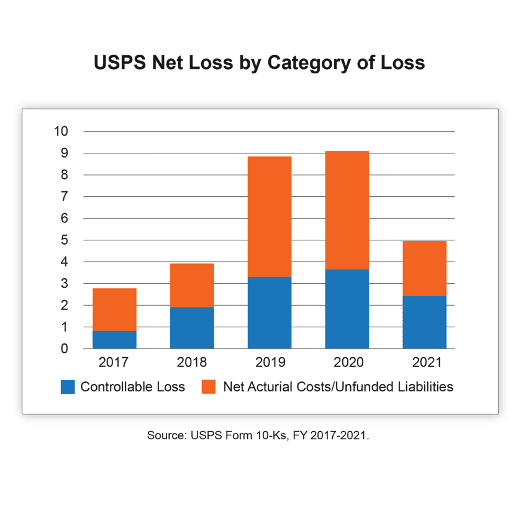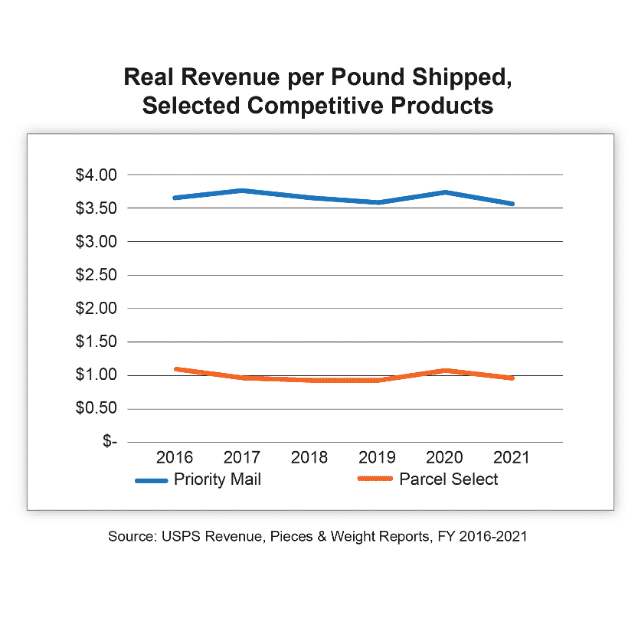
USPS Loses Another $1.5 Billion in First Quarter of FY 2022
Ross Marchand
February 8, 2022
The United States Postal Service (USPS) has lost an astounding amount of money over the past fifteen years, bleeding more than $90 billion in red ink since 2007. As seen in the below figure, a high proportion of the USPS’ losses over the years has stemmed from financial decisions within the control of management.
 The agency continues this troubling trend by reporting that it shed another $1.5 billion in the first quarter of fiscal year (FY) 2022. This disturbing news comes at the same time that Congress prepares to vote on H.R. 3076, the Postal Service Reform Act of 2021.
The agency continues this troubling trend by reporting that it shed another $1.5 billion in the first quarter of fiscal year (FY) 2022. This disturbing news comes at the same time that Congress prepares to vote on H.R. 3076, the Postal Service Reform Act of 2021.
While H.R. 3076 contains some commendable proposals such as mandating more performance data tracking, it fails to adequately address the underpricing of packages. And, as the current net loss figures show, even an influx of revenue from packages during the last three months of the year (corresponding to the holiday season) is not enough to offset the high fixed and variable costs associated with parcel deliveries.
Packages have taken up an increasing share of the overall mail haul, comprising nearly 60 percent of delivery weight in FY 2021. But interestingly, real revenue per package pound shipped has decreased in recent years.

This needn’t be a cause for concern if revenues were nonetheless covering costs and delivery costs were declining (perhaps due to increased delivery efficiencies). Unfortunately, it appears that revenues are not in fact covering costs due to misguided agency cost attribution calculations. For example, the agency only attributes 10 percent of the costs of city carriers’ street activities to competitive products (i.e., packages) and 0 percent of headquarters expenses to packages. The latter figure is particularly implausible, given that headquarters staff regularly draft reports on package deliveries and negotiate agreements with e-commerce companies to deliver packages.


Clearly, something is very wrong with the USPS’ cost and pricing methodologies. To its credit, H.R. 3076 does recognize this problem and orders the Postal Regulatory Commission (PRC) to review these calculations. But, this alone will do little because the PRC has already conducted a similar review and dubiously defended the status-quo. It is time for outside auditors to have full access to the agency’s books and conduct a thorough analysis of the USPS’ ills. Until that happens, America’s mail carrier will continue to lose gargantuan sums of money.
